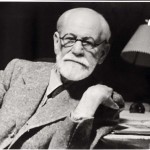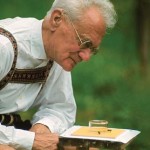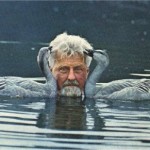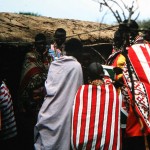Human behavior is so complex. In response to this dilemma, there are countless scientific areas attempting to try to explain certain areas. However, the final synthesis is still not accomplished at the present. After a short historical background, I would like to introduce the point of view of the biological approach, the so called human ethology.
BIRTH OF PSYCHOLOGY
Philosophers were thinking about thinking for hundreds of years. At the end of the 19th century, the “first psychologist” Wundt attempted to take psychology into the laboratory and make simple measurements like reaction times. By so doing, he attempted to make it approachable for science.
PSYCHOANALYSIS
Some years later the psychoanalytic movement started with a completely different attitude. They examined the unconscious psychic content and its role with the help of introspection, free association, and dream analysis. Except for the theorists themselves, their subjects were dominantly neurotic or mentally ill patients.
BEHAVIORISM
This was unacceptable for the accuracy preferring behaviorists, who questioned not just the unconscious, but even the conscious psyche – first only the possibility of its investigation with scientific methods, later even its pure existence as well. They developed a very precise, controlled, repeatable experimental approach, by which they improved the learning theory. The laboratory results were derived mostly from rat and mice experiences. They applied their conclusion to humans with little or no restrictions.
HUMANISTIC PSYCHOLOGY
Both the psychoanalysis and the behaviorism are deterministic in the sense that psychoanalysts claim that the instincts and the early experience determine the personality, the behaviorists claim that the stimuli – reaction type of learning is responsible for every observable behavior. In reaction to this determinism, the “Third Force” emerged in the history of psychology. The Humanistic Psychologists accept that basic instincts drives people and they accept that learning plays an important role in shaping behavior. Overall, with these factors they assume that the inner desire of self-actualization is the highest motivation for mankind. Fulfilling our own full potential, we are free to choose how to behave, how to think, and more or less how to feel.
THE BIRTH OF ETHOLOGY
Meanwhile psychologists tried to figure out how neurotic psyche is working, or how to modify variables in an experimental situation to evoke behavioral changes, or try to sort out what motivates development in healthy individuals. Zoologists were wandering around in the wild in the search of “nature’s laws”. Some of their attention turned to the physical characteristics to the behavior of animals. Out in nature, they mostly met the inherited, genetically fixed action patterns of the animals. In 1973 Konrad Lorenz, Nicolaas Tinbergen and Karl von Frisch won shared Nobel Prize in Physiology or Medicine for their animal behavior study. A new science was born, it is called ethology.
THE NEW SCIENCE 
Von Frisch translated the dance of honeybees, Tinbergen described the reproductive behavior hierarchy of the three-spined stickleback and Lorenz made distinctions between analog and homolog behavior pattern during evolution. As zoologists, they never forgot about evolutionary background and their emphasis was on the natural behavior in the natural environment. They focused on the physiological mechanisms, the individual development, the evolutionary origins and the function of behavior. The fluent behavior has been split into separate elements, and the huge descriptive work of “ethogram” collection began. Ethogram is the inventory of all behavior patterns of a species. This descriptive ethology serves as a basis for determining species specific patterns, making comparisons, and searching cause and effect laws and functions.
EVOLUTIONARY BACKGROUND IN PRACTICE
While behaviorists ran rats in labyrinth experiments, and tried to figure out how rewards reinforce the labyrinth learning. Ethologists drew the conclusion that through millions of years of evolution, rats lived in holes and burrows. Via natural selection they adopted to that kind of environment. Therefore their good learning performance was derived from their special adaptation.
In another example, researchers wanted to compare two species in term of “intelligence” and gave a detour assignment for squirrels and dogs. The squirrel achieved better. Based on that, they concluded it is more “intelligent” then a dog, which is not necessarily true. Before we conclude in such broad categories like general intelligence, we need to consider that squirrels evolved to tree dwelling creatures. They need to find their path among narrow branches and calculate routes in three dimensions. Generations over generations, the best were selected among them. Of course they are better in detour using than a species which never had to go away first in order to approach their target.
IMPRINTING STUDIES

Lorenz discovered that when a duckling hatches, it immediately follows the first moving object. In nature it is usually its mother. If by chance this is something else, the duckling follows faithfully. It works with anything about knee height. There is a short sensitive period when the “image of the mother” imprints to the nervous system. After that it is unchangeable, and works like genetically fixed pattern. As the research progressed, it came to light that more or less every species has some kind of sensitive period after birth. By some bird species, it even leads the species identification, in the meaning that which species they imprinted as hatchlings, they chose that species as a mate. Researchers also proved that imprinting plays a basic role by shaping mother infant bond by mammals in different proportion and different fashion. By the first lick, the newborn smell is imprinted into the mother. Through the touches and nursing, the mother’s smell and picture is irreversibly imprinted to the young. Behavior characteristics also help guide this process: zebras guide their foals away from other mares after birth for some days, until the image of the mother is fixed. In the wild, animals feed only their own young except for some, so recognizing someone’s mother is essential.
Naturally the question arose: does this sensitive period exist with humans as well? In a less rigid fashion, the answer is yes! Investigations proved that the few hours after birth is very important. This is the time when the newborn is very vigil for good reason (if they are not overloaded by painkillers or other drugs via the mother’s body). Differences in attachment could be shown even 10 years later. Though in western cultures the sterility is above all, therefore they took away the newborn from their mother immediately after birth, but even infections were lower in case when they had the possibility to stay in close body contact for a while.
Back to top
BEHAVIORAL ECOLOGY
That is the branch of ethology that tries to find out the connection among certain behavior of a species and its physical or biological environment. They are thinking in terms like: What is the survival value of that particular behavior? Does it increase their inclusive fitness? How does certain environmental characteristic influence the behavior?
In antelope body size, food preference, territorial behavior, communication and anti-predatory behavior, the interconnectedness is clear. In the African savanna, a lot of antelope species are running around. The smallest is the rabbit sized dik-dik antelope; the biggest is the cow sized eland. The small ones need high nutrient content leafs and buds; they are browsers, so they live in the forest. The sources are scarce and concentrated, so they defend their territory mostly in pairs. In the woods they don’t see each other, so they communicate with smell and hearing. They try to hide from predators. At the other end, the bigger ones such as the wildebeest are satisfied with the low nutrient content grass. They are nomadic, following the seasonal rains. On the open savanna, they communicate with each other mainly with visual signals, and aggregate or simply escape from predators. Not surprisingly, the middle size antelopes are mixed feeders – eating grass and leaves – they are somewhat territorial. In communication they use smell, hearing and visual elements and form harem groups. Naturally, there are exemptions. The cause and effect are never straight: they grew long legs because they lived in open places, or they could go to open places because they already had longer legs. They evolved together with their environmental changes.
REPRODUCTIVE STRATEGIES
In biology, the main distinction has been made between male and female based on the size of their gametes. The female has a relative small amount of large gametes. At the time when it is fertilized, the female already invested a lot into its offspring and she doesn’t want to lose any of them. In an opposite fashion, the male has a tremendous amount of relative small gametes, producing them is not costly so protecting only one of them is not cost effective. Because of that, the female’s reproductive interest is to help the survival of all of its fertilized egg. The male’s interest is to fertilize as many eggs as possible. In case a lots of species’, females also mate with multiple partners probably because genetic variance is also beneficial for survival.
But the situation is more complicated. The inclusive fitness depends on the offspring itself surviving until its reproductive age. The parent’s main interest is to ensure the survival of their young. In the animal kingdom, we find different strategies for that. Among the invertebrates, most of them produce a vast amount of offspring, but then leave them on their own destiny. In the case of some fish, the father assumes for the care. However, with most mammals, the mothers are the caretaker. When only the mother or only the father is the only caretaker, the reproductive system is polygamous. (They mate with multiple partners.) Among the birds, we find polygamous and monogamous systems too.
The accepted hypothesis is that in those circumstances when the chance of the youngster’s survival is higher when both parents take care, they do it so monogamy takes shape. In behavior ecology, monogamy means only that the pair stays together at least one season; it does not mean “faithfulness”. In some pairs one of them desert – which can be the male or the female. Some try to mate with a neighboring animal. In all cases we can count with the assessed cost – benefit proportion. What is the chance of having more offspring, finding a new mate, survival of the first offspring in case of leaving the first partner alone? Naturally, none said, that those birds calculate that with clear awareness! But we assume that genes influence the reproductive behavior and evolution selected those genes and behavior forms that helped to get more genes into the next generation.
Does it mean anything for humans? Yes and no! It is very hard to compare. First of all, in behavioral ecology monogamy has nothing to do with moral, only with the survival rate of the offspring. In human culture this is a very sensitive topic. Second, we are speaking about species and probabilities, not individual stories! It might even feel hurtful to compare animal behavior with our biggest heartache! Naturally science does not intend to hurt anyone!
Among human cultures, we find also different marital systems. In polygamous cultures, according to what we predict based on the male- female biology, mostly men can have more wives, and there were only a few known cultures when women could have more than one husband. Also there are monogamous cultures, where at least the expectation is to be faithful to your partner – more or less on both sides. But still: in the harems usually there is one “favorite wife” who reminds us to monogamy. In the monogamous cultures we are full of examples for polygamous behavior. We have a good reason to assume that those behaviors are influenced by genes, and we could see explanations for both kinds of behavior. It might be easier to understand ourselves if we accept that deep inside we have both tendencies, most probably males lean on one side, females on the other. However behavior ecology has never said that the genetic background means any excuse for certain action! Independently from our genes, we are responsible for whatever we do. It either falls in the direction what our genes predispose us, or against it. Not to mention that we can choose from opposite tendencies!
SELFISH GENE
Someone said gene selection? Yes. Dawkins renewed the old natural selection concept, and stated that it acts on the level of the gene. If it had worked on the level of an individual, according to the original version the whole world should be a very selfish, hostile place. But it is not. Every step we meet altruism in nature, with other words helping someone even the disadvantage of its own. Eusocial insects’ social life gave the first clue for an explanation. In case of some ants, bees and wasps, a whole sterile caste formed whose task is only taking care of the brood. Why don’t they deal with their own reproduction? In their haplodiploid reproduction system, the workers have 75 % common genes with their sisters, and would have only 50 % with their daughters. In Selfish Gene Theory, they can pass more common genes in the next generation so they increase their inclusive fitness.
Similar ideas are working in case of mammals too. For instance, in a lion pride most of the females are relatives. If they are mother-daughter, or siblings, they share 50 % of their genes, if they are aunts, or cousins, they share 25% and so on. If an individual helps to survive one or more of its relatives through the passed common genes, it might be increasing its own inclusive fitness.
Altruism happens between non related individuals as well. In most cases, researchers assume this is mutual altruism that implies more or less equal benefit for the two animals.
All altruistic behavior could be explained if we suppose that our genes are under selection. Those genes pass in bigger number to the next generation which more effectively helped survival of the individuals with the same genes.
HUMAN ETHOLOGY
So here we have a relative young biological science dealing with observable natural behavior patterns, paying attention to the evolutionary background as well. Naturally it can use humans as the subject of investigation.
Initially the comparative primate studies helped us gain more understanding. What makes us different from our closest relatives, the apes? From mostly plant eating primates, we evolved to hunting – gathering humans. The group emerged at a higher significance than ever before and the earlier competition exchanged to cooperation. We had to synchronize our movements, our mental states and even our emotions. A unique feature emerged possibly to support the group cohesion: empathy, hypnosis, rhythm, music, and dance. New cognitive structures shaped to serve with conflict resolution, and imitation became of higher importance and proportion than in any other animal group. In addition the group loyalty increased in a level never witnessed before.
High sociability resulted in strong support and help for injured, sick group members, which is also very scarce between animals. Only among highly social animals like elephants and dolphin are some reports being known.
Sharing food happens usually only between mother and child in primates, while quite usual in humans.
Before we became toolmakers, we began an attraction to objects.
Another unique feature of the human group is the complement work, which hasn’t been seen among primates. People have an end product in their mind, and share the task on an alternate way, while one does one part of the job, the other does the other.
As the child, rearing time extended longer than in any other species. The mother, the father, even close relatives are helping in child rearing. Monogamy partly grounds the long common effort, more over in the absent of the hunting men secures and protects the personal structure of the group.
One of our most prominent distinctions from the animal world was the language. Naturally, human ethology supports the idea that language learning builds on the genetic background. It seems to have a wide sensitive period. Children until about 10 years learn the language differently than adults. In some sad situations when children grew up without language exposure after the critical period, language learning was not perfect. In other example, twins growing up with a deaf grandmother created their own language, which shows its genetic base.
In communication not only the development of language is unique. Way before the speech, humans had about 250 different facial expressions in sharp contrast to 20-30 signs in the cases of apes.
All facial expression of emotions was recognizable for all culture in the same way. For example, everywhere people shortly lift their eyebrows when they see acquaintance. Smile without showing the teeth aims to decrease the aggression of the other, while laugh can be playful aggression, with the meaning: what’s happening now is not serious. We also can pretend those signs, but if it is genuine it takes a fraction of a second. If they are pretended, they usually last slightly longer.
We process body language as a bigger part unconsciously, but its influence on our behavior is enormous. Some even state that the information flows in 80 % or more by body language, 15% vocalization, like tone, speed of speech, pitch, and verbal communication is responsible only for the last 5%.
The expressions of aggression are also universal, but in the intensity cultural differences make a huge impact. Filming among Bushmen, researchers didn’t find any aggressive gestures, until they use a camera that filmed in the back of the cameraman. Only then they could reveal that children put their tongue out, and showed their butt at the back of the filmmakers. But that was all signs of aggression, and it came only from children. In the Bushman culture, parents educate the young ones not to behave aggressively, they help to resolve conflicts, encourage peaceful behavior. On the opposite side, the South American Yanomamo tribe is famous about their aggressive culture, they straightly teach their children how to bully, and they treat each other aggressively. These examples show us that the cultural learning builds onto the minimal universal genetic predisposition, and exaggerate or lessen it significantly.
ATTACHMENT THEORY
Although Freud and Jung stated a long time ago the important role of the early experience plays in individual development, the other branches of psychology and the biological sciences were late to prove it. In the middle of the 20th century, proof began to flow from more sides: the mother – child relationship is the basis for the formation of the personality, more over it serves as a model for later relationships. It reminds us to the imprinting: in the first few months a special bond forms between mother and child, which later elaborated into a sophisticated connection, communication style and attitude towards significant people. The ways we connect and communicate with our mother basically influence our later relationships. And don’t be misled: first the dependency needs has to be satisfied, only after can the independence come. If you hurry independence, it easily ends up at the opposite: pushing children too early to gain independence can cause late clinging on the never received security.
Mary Ainsworth worked out the “Strange Situation Test” to measure attachment type. She invited mother/father and their one – one and half year old child into a room, where toys and a stranger were waiting for them. Usually the children engaged themselves with the toys. In consecutive episodes the child was left alone with the stranger, later all alone. This caused distress for them, serious for some. The actual measurement happened in the reunion episodes, basically with method of ethology: coding behavior elements.
The researchers could differentiate 3 types.
1 – “Securely Attached” children showed strong distress. They cried, fussed, went to the door, and so on. When the mother came back, they ran to her, picked up eye contact and body contact immediately. They were easily made comfortable, and soon they went back to play.
2 – “Ambivalent Insecurely Attached” children demonstrated huge distress when mom disappeared, they picked up contact immediately when she returned, but their signs were ambivalent. They showed hostility near the positive affection. For example, they were kicking mom while hugging. They did not calm down easily, cried long, and were not able to turn back to play soon. They were clinging on mom.
3 – “Avoidant Insecure” children. They didn’t even show the obvious signs of distress when the mother left. When the heartbeat, breath and skin resistance were measured, it showed their unambiguous stress. When the mother returned, they did not pick up eye- or body contact but continued playing like nothing has happened.
This test was conducted for cross-culture comparison, basically with the same result everywhere. Interesting exceptions were the Bushman mothers, who were not willing to put down their babies in strange environment even not for three minutes! Let’s think about it! In our ancient past if we put down the child for a minute alone, the smallest predator could take it. Is it right to expect from our children today to stay put alone?
THE COMMON ESSENCE: THE INSTINCT
The Human Ethology sees humanity as part of nature, subject of nature’s laws, evolved through millions of years. Our body bears the signs of our history. For instance, our color vision is the product of the diurnal life style. Our forward looking eyes shaped in our tree-dwelling ages to assess the exact distance of branches. Our sweet preference probably derived from our fruit eating past, when the nutritious food was ripe and sweet. On the analog of that, it is highly probable that all of the psychic experience that is important for our survival were somehow printed in our psyche. Maybe this is the point where the Jungian Archetypes meet modern biology?
All psychologists with psychodynamic point of view agree that the instincts have core influence on our behavior. Jung was convinced that our assignment for our whole life is to explore, understand and integrate our unconscious contents into our conscious mind. He viewed it as the basis of psychic health and growing. Here we have a science which makes a huge contribution to discover and explain our inherited characteristics. Let’s use it to our advantage!



